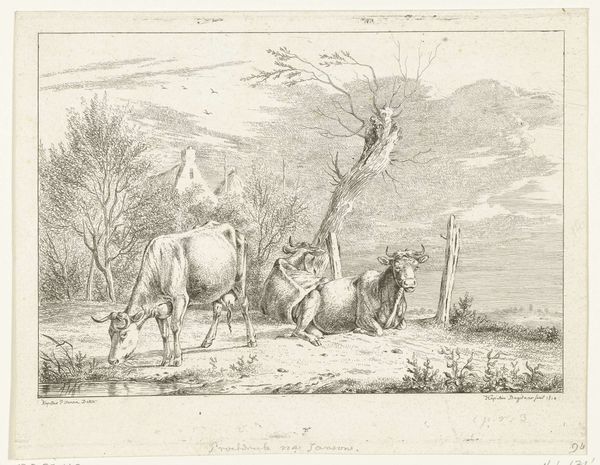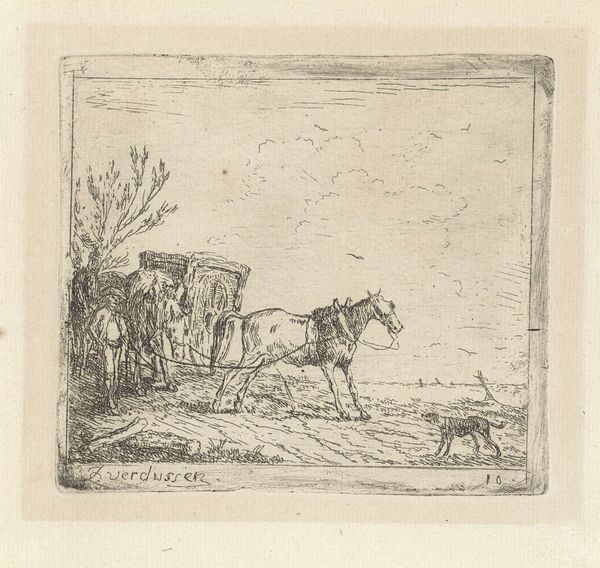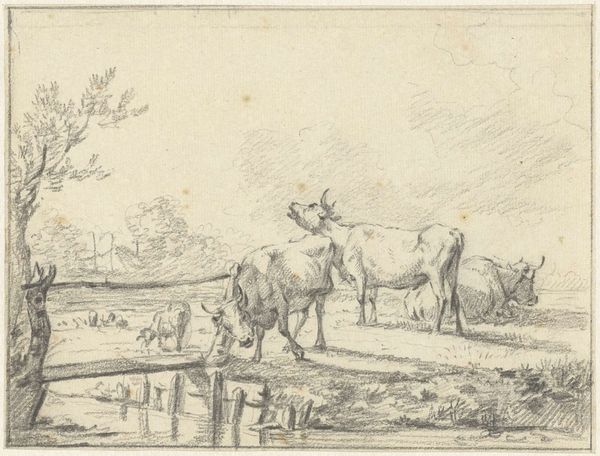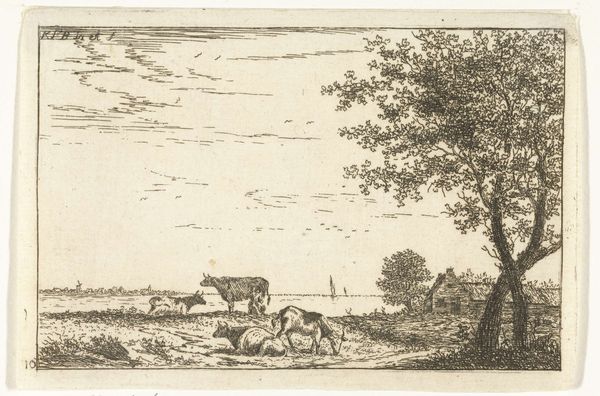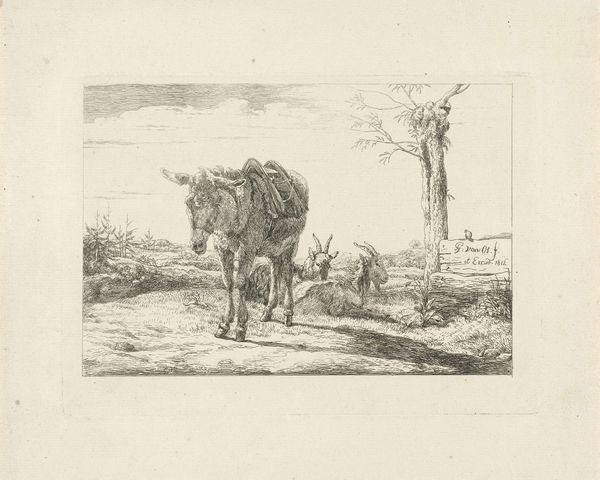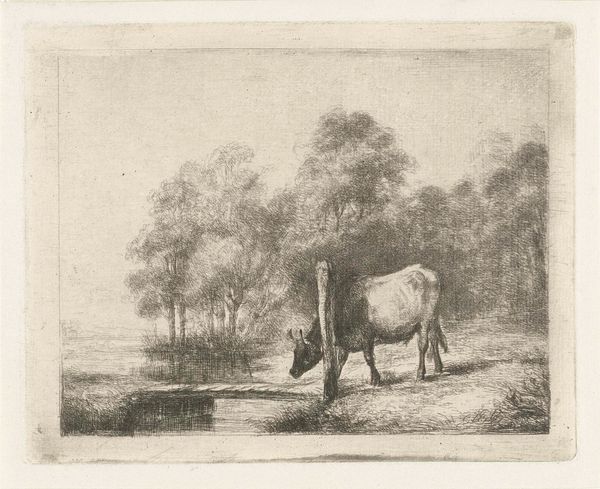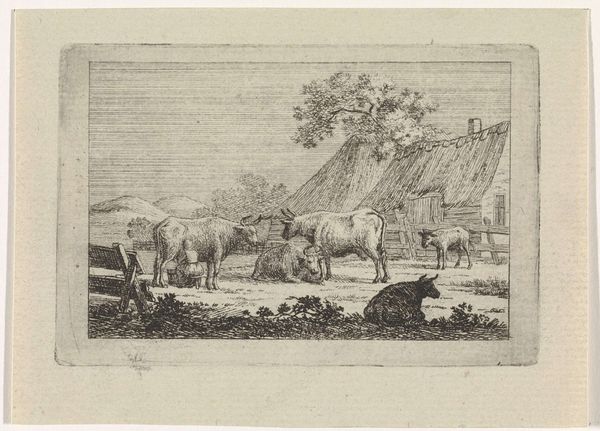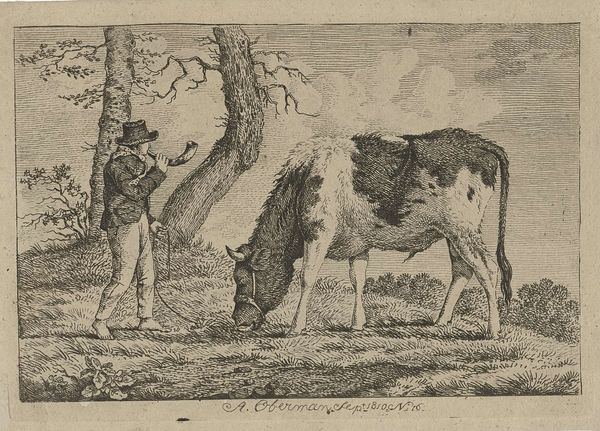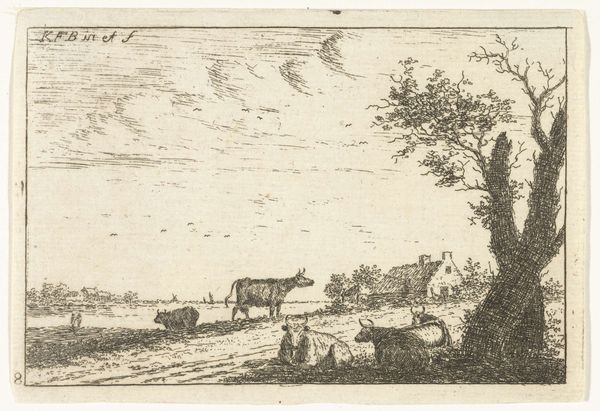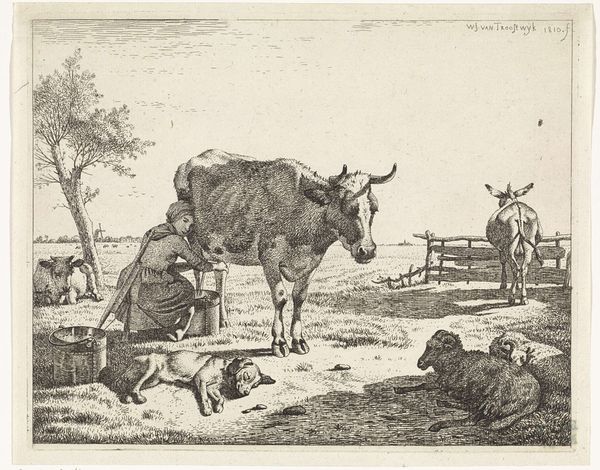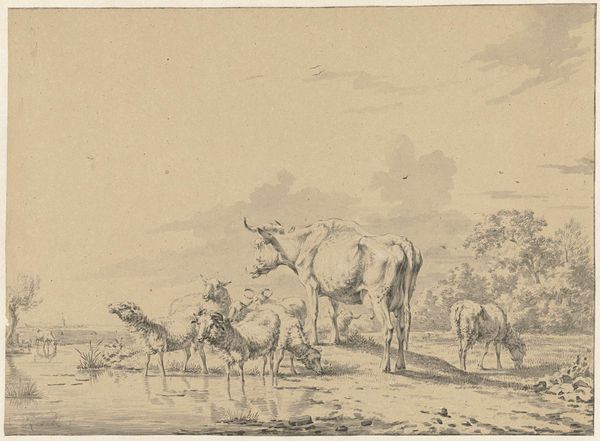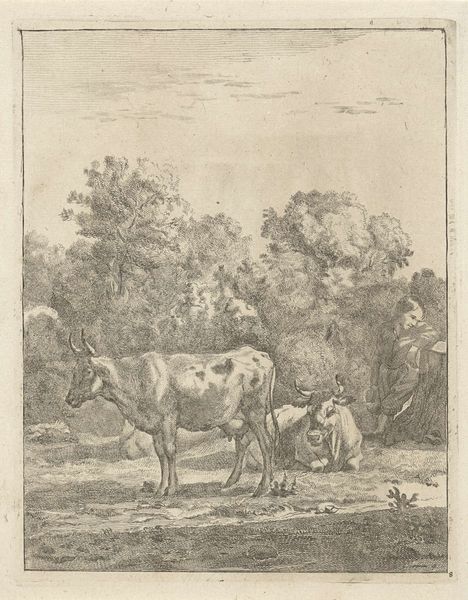
drawing, pencil
#
landscape illustration sketch
#
drawing
#
light pencil work
#
animal
#
pen sketch
#
pencil sketch
#
landscape
#
romanticism
#
pen-ink sketch
#
pencil
#
botanical drawing
#
pencil work
#
watercolour illustration
#
pencil art
#
botanical art
#
realism
Dimensions: height 155 mm, width 206 mm
Copyright: Rijks Museum: Open Domain
Curator: Ernst Willem Jan Bagelaar created this pencil drawing, "Three Cows near a Willow," in 1814. What's grabbing you here? Editor: Well, right away, I'm struck by how the willow, rendered in such a skeletal form, seems to preside over the scene. Its stark branches reaching skyward really set the mood—slightly melancholy, perhaps? Curator: I think you’re onto something there. Willows in art often symbolize sorrow or resilience. Considering the Netherlands was emerging from Napoleonic rule in 1814, that bare tree, while standing strong, might reflect a sense of national weariness alongside hope for renewal. And those cows...they are more than just cows. Editor: Precisely. Notice how they're positioned – one drinking, one lying down looking directly at the viewer, and another nestled under the tree. They create a rhythm that anchors the composition. The lines are also remarkable. It is impressive how few, very thin, sketched lines could carry the substance of volume. Curator: The domestic tranquility amidst a stark natural setting is evocative. Cows often embody notions of bounty, pastoral life, but their placement feels intentional. It’s as if they are emblems of an idealized, peaceful Dutch identity in the making, rooted in both land and history. The way those cows relate to that background is key: a house behind trees and birds flying towards a cloudy sky. Editor: I agree; there's a sense of stability and self-possession despite the understated technique. It suggests not just documentation but a very deliberate observation, translated through line. I appreciate that lack of bombast; it gives it authenticity. Curator: Bagelaar certainly leaves us much to ponder in this deceptively simple pastoral scene, and it reflects a moment where symbolic renderings can give extra value to the seemingly everyday objects that shape us as people. Editor: Yes, it's made me reconsider how we project our feelings onto nature. The scene, in itself, becomes almost allegorical in its apparent simplicity.
Comments
No comments
Be the first to comment and join the conversation on the ultimate creative platform.
